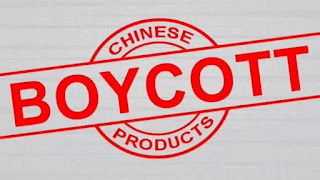Latest update
At least 20 people have died in clashes between Indian and Chinese troops along the disputed Himalayan border running along the Ladakh area of Kashmir. It is the first fatal clash since 1975 and the most serious since 1967. Tensions have been escalating since late April, when China sent thousands of troops into the disputed territory along the Line of Actual Control (LAC), bringing artillery and vehicles.
Analysts say that the Chinese government, which has been more assertive in building infrastructure in the area, is anxious to frustrate any effort by India to upgrade its own military installations.
Their refusal to leave disputed areas, including the Galwan Valley inside Indian territory, has triggered shouting matches, stone-throwing and fistfights in key border areas. Last month, there was a massive brawl between patrols, but no deaths.
Earlier this month senior military leaders from both sides met and made a commitment to disengagement.
Border Disputes of India With China
- India has 15,106.7 Km of land border and a coastline of 7,516.6 Km including island territories. The length of our land borders with neighbouring countries is as under:
- 4 states viz., Himachal Pradesh, Uttarakhand, Sikkim and Arunachal Pradesh and a Union Territories of Ladakh (erstwhile state of Jammu & Kashmir) share a border with China.
- The Sino-Indian border is generally divided into three sectors namely: Western sector, Middle sector, and Eastern sector.
Western Sector
- In the western sector, India shares about 2152 km long border with China.
- It is between Union Territory of Ladakh (erstwhile state of Jammu and Kashmir) and Xinjiang Province of China.
- In this sector, there is a territorial dispute over Aksai Chin. India claims it as part of erstwhile Kashmir, while China claims it is part of Xinjiang.
- The dispute over Aksai Chin can be traced back to the failure of the British Empire to clearly demarcate a legal border between China and its Indian colony.
- During the time of British rule in India, two borders between India and China were proposed- Johnson’s Line and McDonald Line.
- The Johnson’s line (proposed in 1865) shows Aksai Chin in erstwhile Jammu and Kashmir (now Ladakh) i.e. under India’s control whereas McDonald Line (proposed in 1893) places it under China’s control.
- India considers Johnson Line as a correct, rightful national border with China, while on the other hand, China considers the McDonald Line as the correct border with India.
- At present, Line of Actual Control (LAC) is the line separating Indian areas of Ladakh from Aksai Chin. It is concurrent with the Chinese Aksai Chin claim line.
Middle Sector
- In this sector, India shares about 625 km long boundary with China which runs along the watershed from Ladakh to Nepal.
- Himachal Pradesh and Uttarakhand touch this border with Tibet (China) in this sector. Both sides do not have much disagreement over the border in this area.
Eastern Sector
- In this sector, India shares a 1,140 km long boundary with China.
- It runs from the eastern limit of Bhutan to a point near the Talu Pass at the trijunction of Tibet, India and Myanmar.
- This boundary line is called McMahon Line.
- China considers the McMahon Line illegal and unacceptable claiming that Tibetan representatives who had signed the 1914 Convention held in Shimla which determined the McMahon line on the map were not having rights to do so.
Government Response
Government of India has been working on all fronts to thwart this current tension between the two nations. Several rounds of bilateral talks were held to deescalate the military confrontations. Even on diplomatic level also initiatives are on for confidence building measures between the two nations but peaceful and amicable outcomes are in waiting. Both countries know that in case of war, they will have to pay heavy price as both of them are equipped with most modern and deadliest weapons whose use will be thousands times more destructive then ever before. Both of them are today nuclear powers so any military confrontation may lead to nuclear war. But the expansionist policy of Chinese government is continuing as before ignoring the very consequences of war. China since its inception under communist government openly followed very aggressive policy of territorial annexation if we look at the history of Indo-China relationship.
Where as India since independence under the leadership of Jawaharlal Nehru, followed a policy of peaceful co-existence and non aligned movement as the base of its foreign policy. One by one several attempts were made by China to swallow the Indian territory and the contemporary government never shown any strong resilience as today our government is responding.
Our Response
But I believe efforts have to be made from all corners to incur huge financial loses to china. We have become one of the largest consumer of Chinese products leading to the inflow of huge
Sum of money to china. In turn, China is using this money to manufacture modern and deadliest arms and weapons to kill our soldiers. As citizen of India, my responsibility is to boycott all those forces which are working to pose threat to our motherland. I am leaving up to you to play your part to eliminate everything that is associated with China or benefitting China in any way.
I am sharing the list of Chinese companies, apps or companies with Chinese investments. Please verify and boycott if you think it in the interest of our country.
The companies which have major Chinese investments in our day to day life include: –
|
* Big Basket
* Byju’s
* Delhivery
* Dream 11 |
* Oyo
* Paytm |
are some where Chinese companies hold stake.
What China is doing with us and rest of nations around the world makes us more determined to harm China by us think seriously to harm China, however miniscule our efforts be. The least we can do is to uninstall the Chinese Apps from our mobiles at present and later on must switch over to Indian made gadgets.
|
Top 25 Chinese Apps in India
* Helo |
Top Chinese Software
Alibaba Group Automobile sector in India with Chinese investments Volvo (Own by Geely) |
Other Chinese co. in India with large investments
*Sinosteel |
The list can be expanded by adding some more. We have to decide if we want to be Chinese slaves or Not…
Written By,
Sailendra Kumar,
Principal, Takshila School, Gaya

